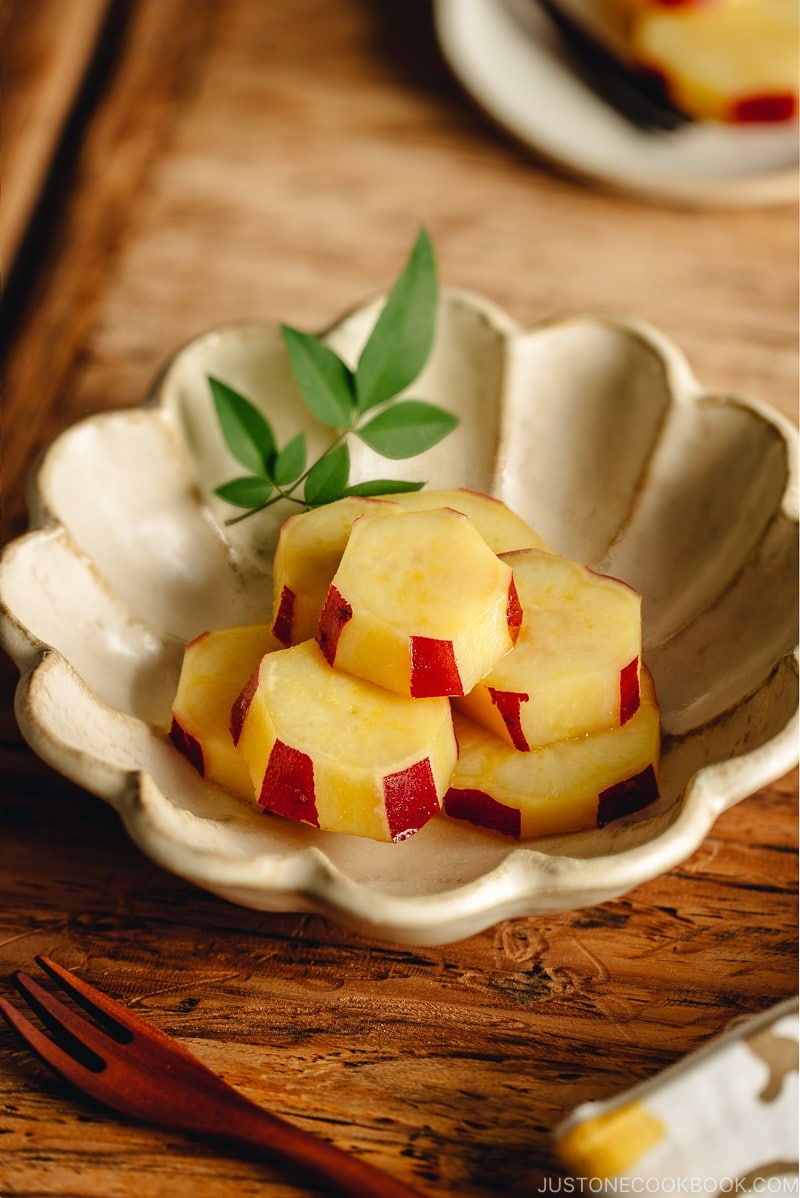
This Simmered Sweet Potatoes with Lemon (さつまいものレモン煮) is a humble dish that exemplifies the flavor and nutrients of the amazing vegetable. Gently cooked in a liquid with lemon juice, they are slightly tangy and sweet with a pleasant fruity fragrance.
I like to make a big batch of it to serve as a side dish throughout the week and I sometimes pack them in my kids’ lunch boxes. They make a healthy afternoon snack to enjoy with your green tea too. If you love Japanese sweet potatoes, you will appreciate the simplicity of these simmered sweet potatoes.
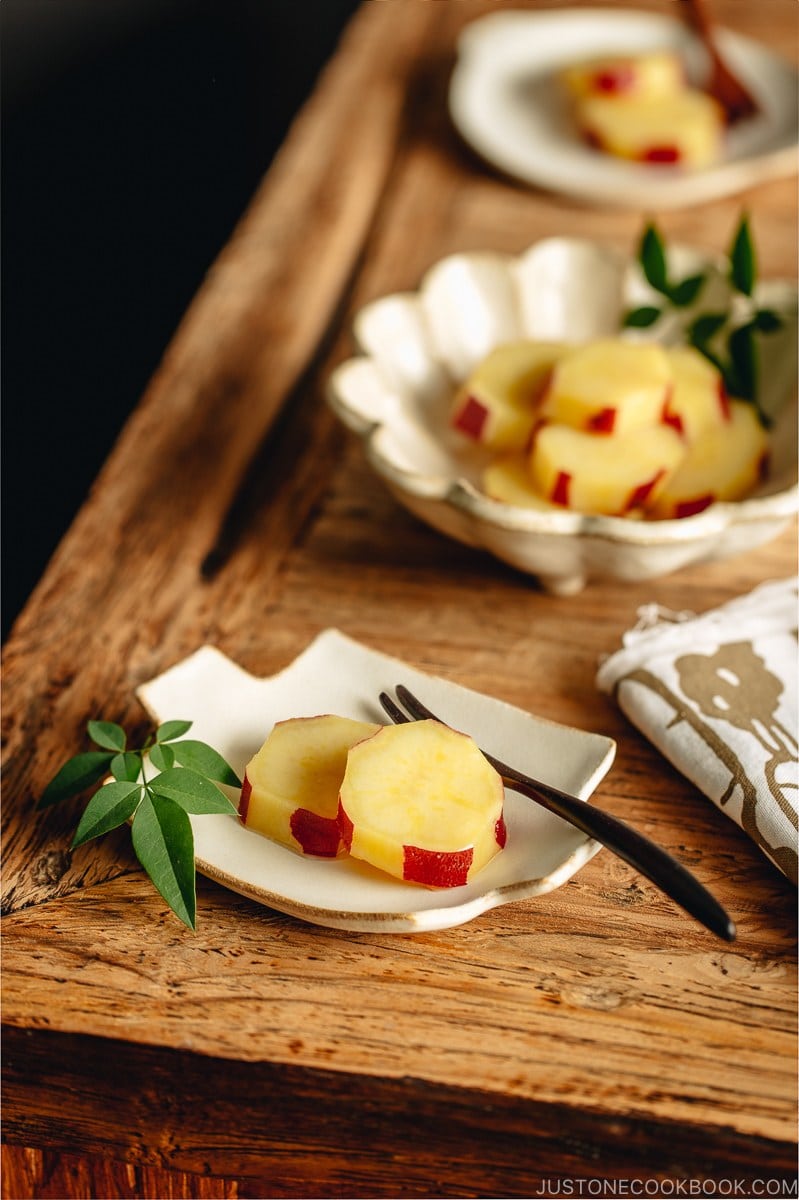
3-Ingredient Simmered Sweet Potatoes with Lemon
For this recipe, you’ll only need three ingredients: Japanese sweet potato (satsumaimo), lemon, and sugar.
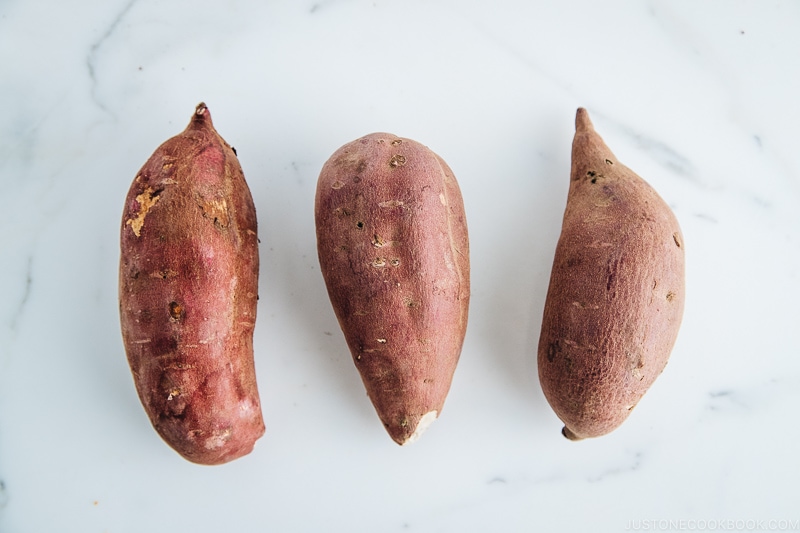
Some variations of this recipe may include mirin, soy sauce, and so on, but I personally enjoy the sweet potatoes in their simplest flavor. You can experiment with the additional seasonings as you like.
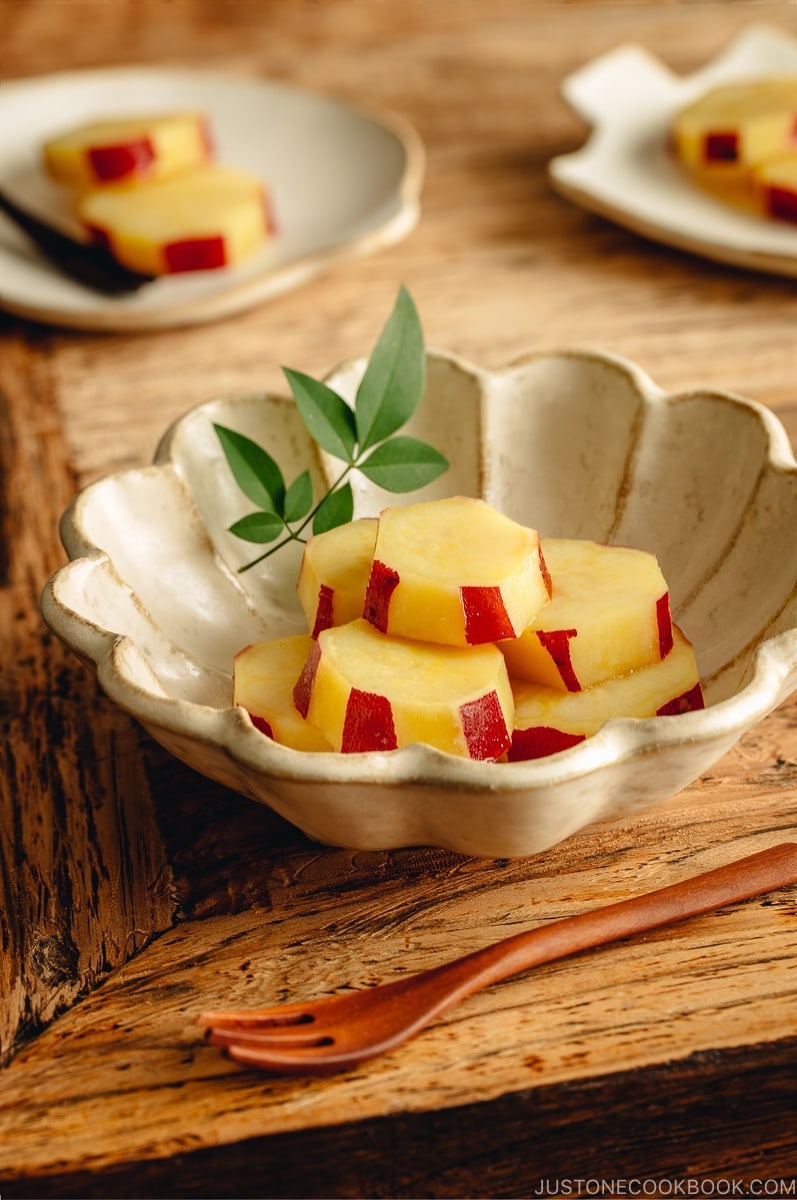
The Importance of the Otoshibuta (Drop Lid)
In this recipe, you will see this unfamiliar Japanese kitchen tool called otoshibuta (落し蓋), or a drop lid being used.
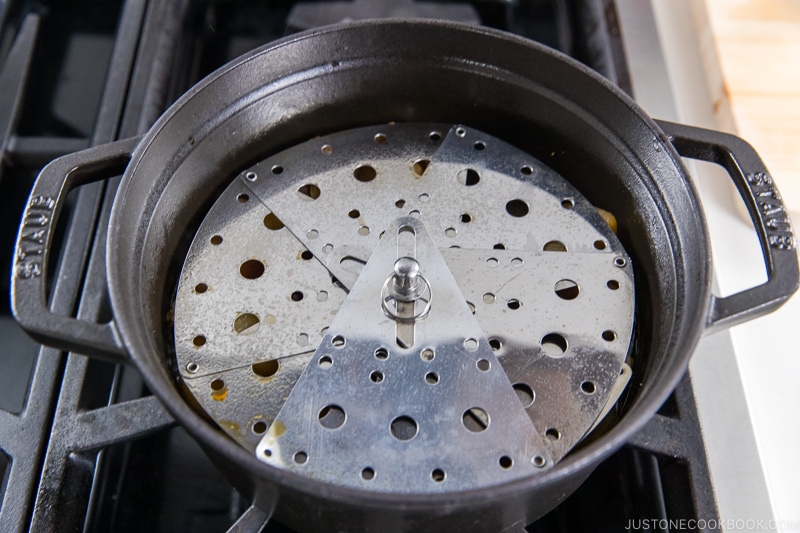
It is an essential Japanese kitchen equipment, traditionally made of wood but these days they are made of stainless steel. The round lid is slightly smaller than the diameter of the saucepan, and the lid floats on top of the simmering foods. Why do we use the otoshibuta instead of the regular lid that comes with the pot? Let’s find out.
What Does the Otoshibuta Do?
1. Even distribution of heat
Otoshibuta ensures that the heat is evenly distributed, allowing the ingredients to cook quickly and evenly as they absorb all the delicious flavors. The cooking liquid circulates towards the lid and coats the top of the ingredients, without being stirred with a spoon (which could possibly break them apart).
2. Prevents ingredients from breaking apart
Otoshibuta holds the ingredients in place so they don’t move around in the liquid and don’t break apart during the simmering process.
3. Prevents evaporation
Using the otoshibuta prevents evaporation, but if you’re cooking with very minimal cooking liquid, you can place a regular lid (with otoshibuta inside) to prevent evaporation 100%.
Where to Buy Otoshibuta?
You can get the wooden otoshibuta (fixed-width) on Amazon or stainless steel otoshibuta (adjustable size) from this online shop.
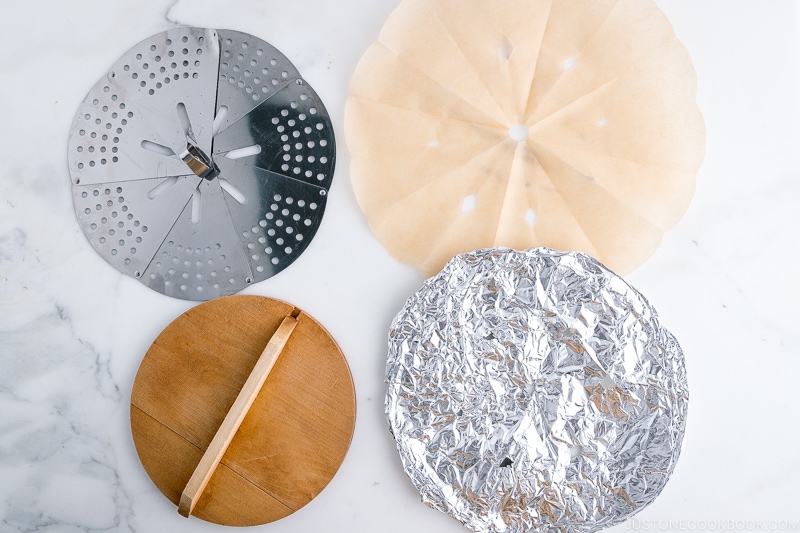
Or you can easily make an otoshibuta with a sheet of aluminum foil or parchment paper. Learn how to make it in this post.
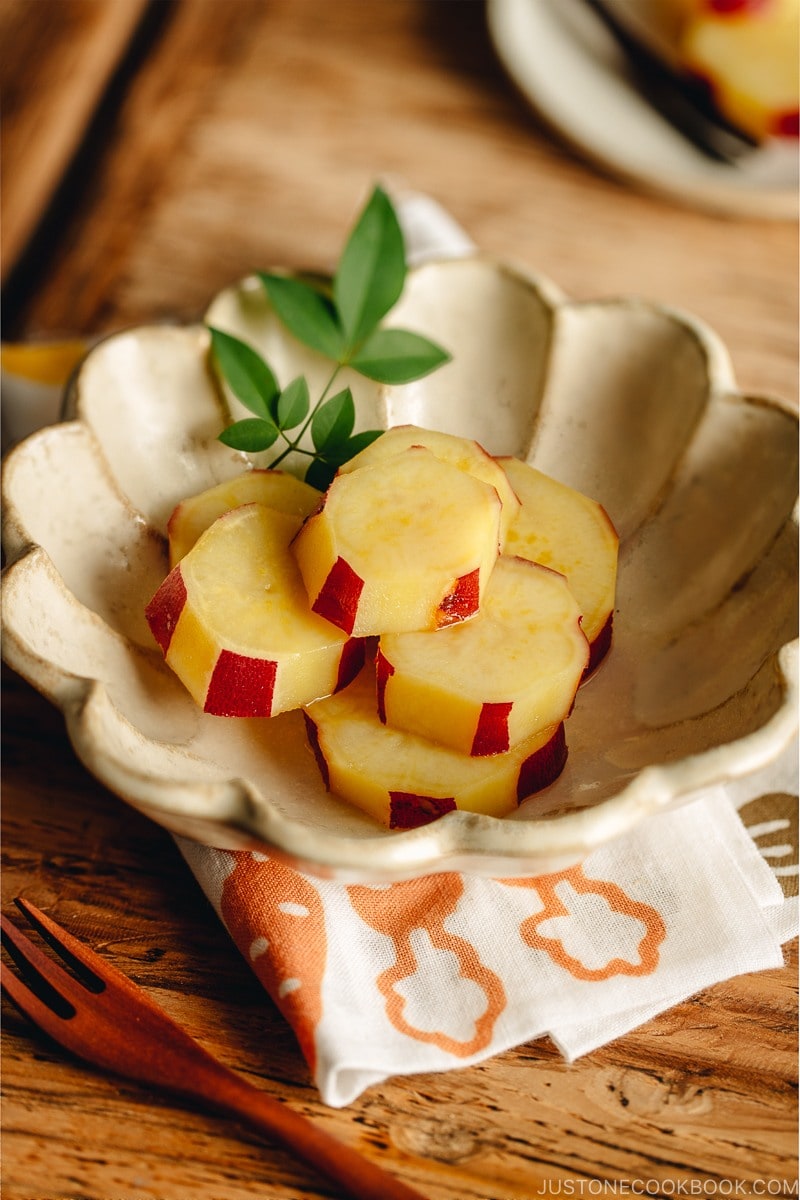
If you’re looking for a new way to enjoy Japanese sweet potato, I hope you give this Simmered Sweet Potatoes with Lemon a try. They are delicious warm, room temperature, or chilled.
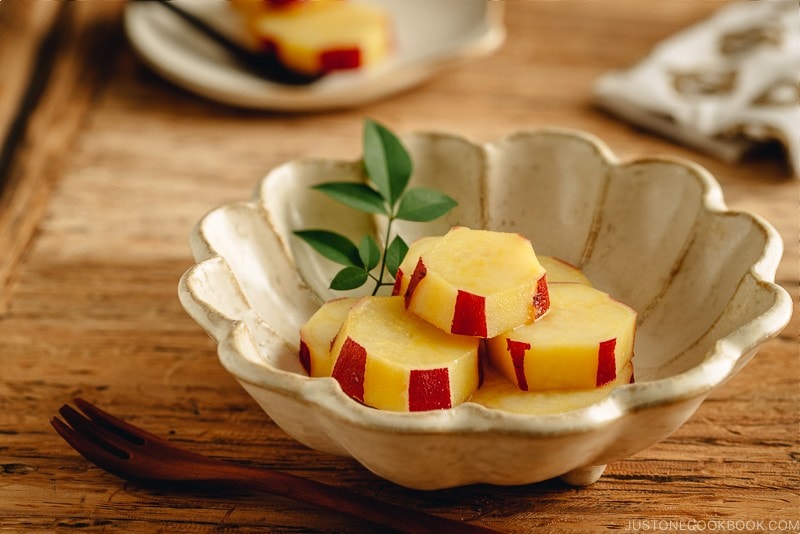
Simmered Sweet Potatoes with Lemon
Ingredients
- 1 Japanese sweet potato (Satsumaimo)
- 1 cup water
- ½ lemon
- 2 Tbsp sugar
Instructions
- Before You Start…Please note that this recipe requires about 2 hours of cooling time. Gather all the ingredients.
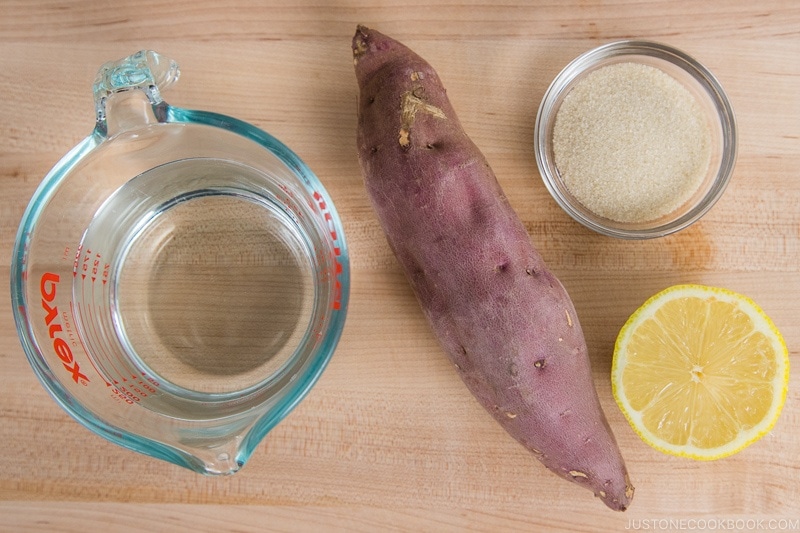
- Peel the skin of 1 Japanese sweet potato (Satsumaimo) alternately to create stripes. Then, cut and discard both ends.
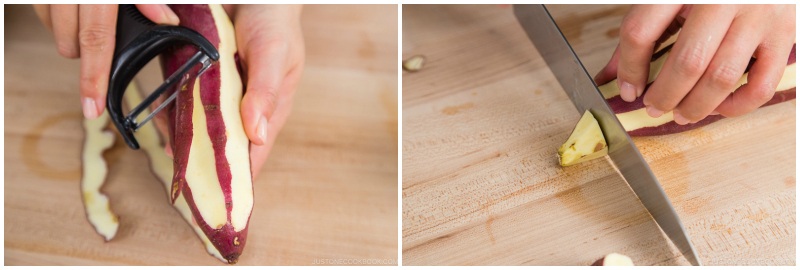
- Cut the sweet potato into rounds about ½-inch (1.3-cm) thick. Soak them in water for 5 minutes to remove the starch, then drain.
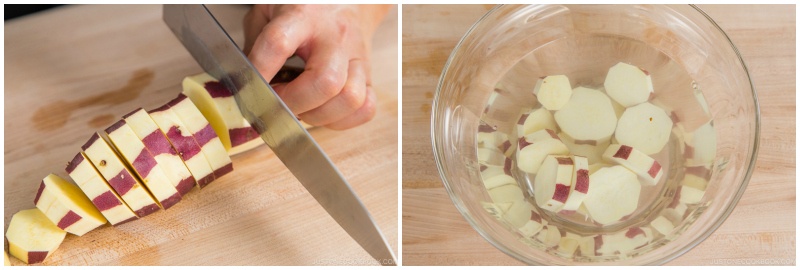
- In a medium saucepan, add 1 cup water, 2 Tbsp sugar, and juice from ½ lemon.

- Add the sweet potato rounds in a single layer (ideally) in the saucepan and place an otoshibuta (drop lid) on top instead of the regular lid (here‘s why). Bring it to boil over medium heat.
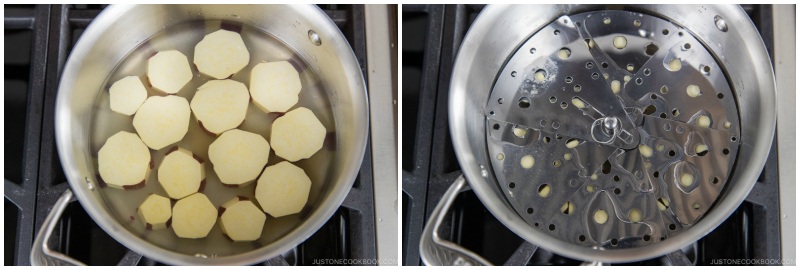
- Once boiling, skim off the scum and foam with a fine-mesh skimmer. Turn down the heat to simmer/low heat. Cook for 15–20 minutes.
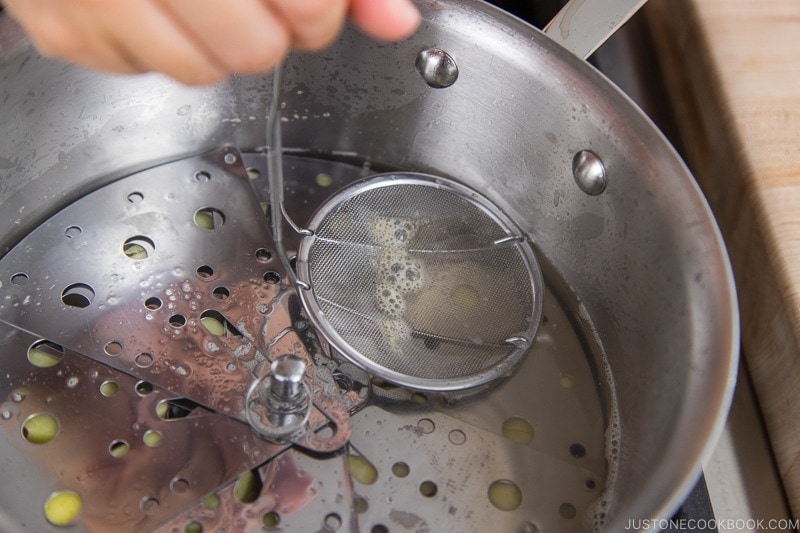
- When it’s almost done, open the otoshibuta and insert a bamboo skewer into the center of the thick sweet potato. It's done if it goes through smoothly.
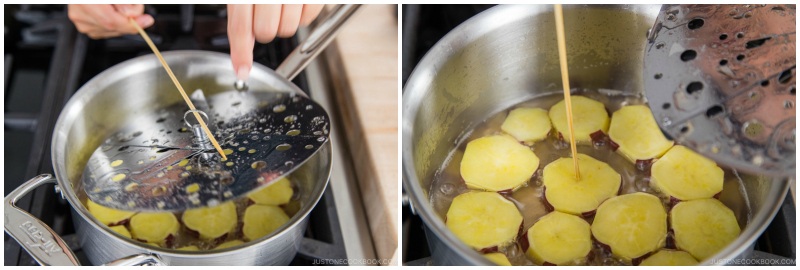
- Turn off the heat when it’s done cooking, and serve. Ideally, set aside and let cool for 2 hours so sweet potatoes can absorb more flavors. You can chill the sweet potatoes in the refrigerator before serving or serve at room temperature.
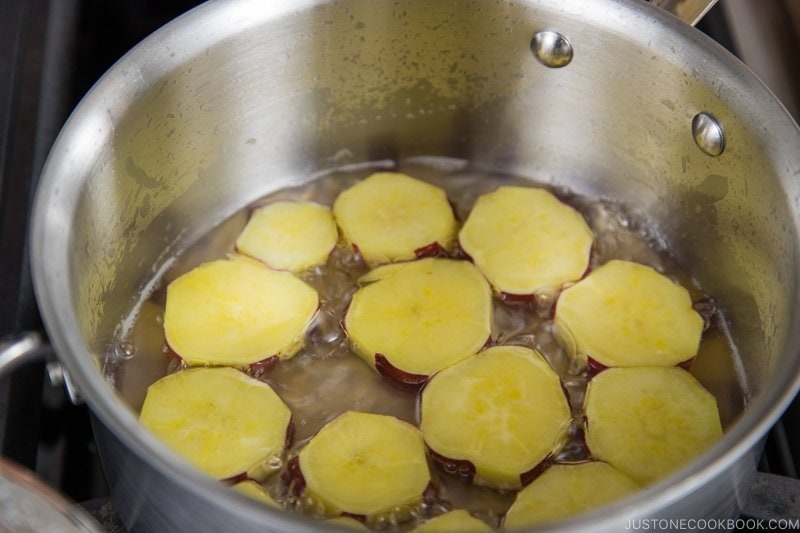
To Store
- You can keep the simmered sweet potatoes in the refrigerator for up to 5 days. You can freeze them, but the texture of the sweet potatoes will change slightly.
Nutrition
Did you make this recipe?
Tag @justonecookbook on Instagram so we can see your delicious creation!


